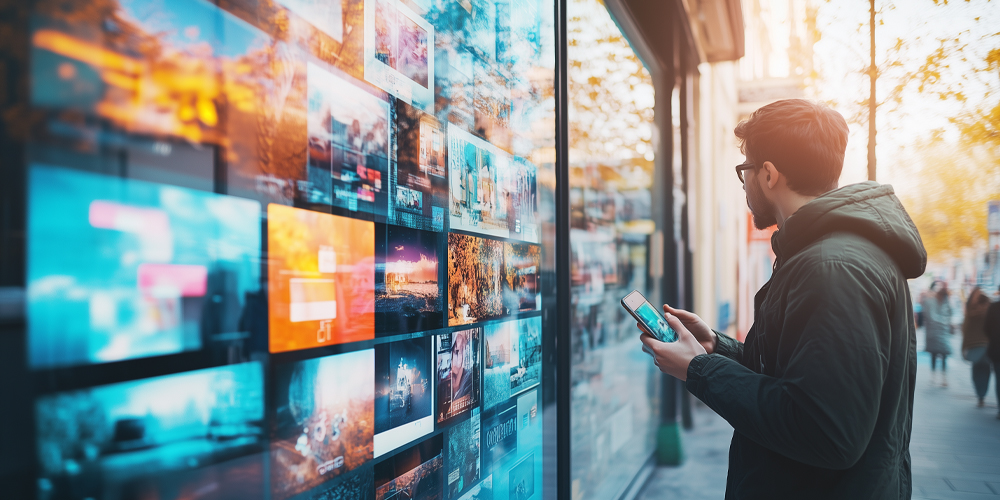The Evolution of Social Interactions in the Digital Age
The way we interact with others has changed dramatically over the past few decades. Social interactions were once confined to face-to-face conversations, but the rise of technology has expanded these interactions to a global scale. From the early days of the internet to the development of social media platforms, technology has made it easier than ever to communicate with anyone, anywhere, at any time.
The Rise of Social Media Platforms
Social media platforms like Facebook, Twitter, Instagram, and TikTok have become central to modern communication. These platforms allow individuals to connect with friends, family, and even strangers around the world. Through posts, messages, and live streams, users can share their thoughts, experiences, and opinions with a broad audience.
One of the most significant changes social media has brought to social interactions is the ability to maintain connections regardless of geographical distance. People can now keep in touch with loved ones who are thousands of miles away, share milestones, and stay updated on each other’s lives in real-time.
The Role of Messaging Apps
While social media platforms focus on content sharing, messaging apps like WhatsApp, Facebook Messenger, and Telegram have revolutionized personal communication. These apps have replaced traditional texting, offering instant messaging, voice calls, and video chats. With features like group chats, voice notes, and file sharing, messaging apps have become essential for both personal and professional communication.
Messaging apps have brought people closer, making it easier to keep in touch with family and friends, even across different time zones. Moreover, they have introduced an element of immediacy in communication, allowing for faster responses and more dynamic conversations.\

TechLife and Virtual Communities
In addition to connecting individuals on a personal level, technology has also fostered the creation of virtual communities. These online spaces bring together like-minded people who share common interests, hobbies, or goals, allowing for meaningful interactions that may not have been possible otherwise.
Online Forums and Communities
Platforms like Reddit, Quora, and specialized forums have created spaces for individuals to discuss topics of mutual interest. Whether it’s discussing the latest trends in technology, sharing advice on parenting, or exploring niche hobbies, these communities provide a sense of belonging and foster social interaction based on shared passions.
The benefits of online communities extend beyond personal connections. They also offer professional networking opportunities and support groups for various causes, helping people find resources, advice, and guidance in their personal and professional lives.
Virtual Reality and Augmented Reality (VR/AR)
Virtual Reality (VR) and Augmented Reality (AR) have further revolutionized social interaction by creating immersive, interactive environments. While VR allows users to engage in fully virtual spaces, AR blends digital elements with the real world, enhancing experiences through mobile devices and specialized wearables.
Social VR platforms like VRChat and Facebook Horizon are reshaping the way people interact online. These platforms provide virtual spaces where users can meet, chat, play games, and participate in events, mimicking in-person social experiences. With VR, individuals can have face-to-face conversations in virtual worlds, attend concerts, and even collaborate on projects from different corners of the globe.
AR, on the other hand, is enhancing social interactions by overlaying digital information onto the real world. Apps like Snapchat and Pokémon Go use AR to bring digital elements into physical spaces, encouraging users to interact with both the digital and physical worlds simultaneously.
The Influence of Video Communication
Video communication tools like Zoom, Skype, Google Meet, and Microsoft Teams have become a staple of both personal and professional interactions. Whether it’s catching up with family, attending a virtual event, or working remotely, video communication has made it easier to maintain personal connections in an increasingly digital world.
Remote Work and Socializing
The global shift to remote work has further emphasized the importance of video communication in maintaining social connections. Platforms like Zoom and Microsoft Teams have enabled colleagues to collaborate virtually, ensuring that work continues seamlessly despite physical distance. These tools also facilitate socializing among remote workers, making it possible to host virtual coffee breaks, team-building activities, and casual chats that mimic the social interactions of in-person office life.
Even as work has gone digital, personal connections haven’t been left behind. Video calls allow people to maintain relationships with family and friends, even when they are unable to meet in person. Virtual celebrations, such as birthday parties or weddings, are now common occurrences, ensuring that no one is left out due to distance.
Online Learning and Social Connections
Online learning platforms such as Coursera, Udemy, and LinkedIn Learning have also changed the way people interact in educational settings. Virtual classrooms, discussion boards, and collaborative projects allow students and instructors to connect and share ideas without being physically present. Additionally, online learning platforms have fostered global communities of learners who can support one another, exchange ideas, and network for professional opportunities.
TechLife and the New Social Norms
As technology continues to evolve, it is reshaping the very nature of social interaction. The rise of TechLife has given people new tools to communicate, share, and collaborate, but it has also created new social norms. From digital etiquette to the blurred lines between personal and professional communication, these changes are having a profound impact on how we relate to one another.
Digital Etiquette and Social Media Behavior
With the proliferation of social media and messaging apps, digital etiquette has become an important consideration in social interactions. What is acceptable in a face-to-face conversation may not be appropriate in an online context. Understanding when to reply, how to engage, and the tone of communication are all part of effective digital interaction.
Social media behavior has also shifted the way people communicate. The use of emojis, GIFs, and memes has become an integral part of online communication, offering new ways to express emotions and ideas. However, these new forms of communication also raise concerns about misinterpretation, privacy, and authenticity in digital interactions.

Blurring the Lines Between Personal and Professional Communication
The boundaries between personal and professional communication have become increasingly blurred, especially with the rise of remote work and virtual networking. Many people now use platforms like LinkedIn, Twitter, and even Instagram to build professional relationships, share career updates, and connect with colleagues. While this has created new opportunities for networking, it has also led to the challenge of maintaining professional boundaries in a digital world.
How TechLife is Enhancing Social Inclusion
One of the most significant benefits of technology in social interactions is its ability to bridge gaps and promote social inclusion. Technology has enabled marginalized groups to connect with others, share experiences, and access resources that were previously out of reach.
Empowering Underserved Communities
TechLife has enabled communities that were traditionally excluded from mainstream social spaces to find their voice and gain visibility. Social media platforms, for example, have given rise to movements like Black Lives Matter and #MeToo, allowing individuals to share their stories, advocate for change, and build supportive communities.
Additionally, technology has made it easier for people with disabilities to engage in social interactions. Accessibility features like screen readers, closed captioning, and voice recognition software have opened up communication channels for people with visual, hearing, or mobility impairments, ensuring they can fully participate in digital social spaces.
Conclusion
TechLife is undoubtedly revolutionizing social interactions, offering new ways to communicate, collaborate, and connect. As technology continues to evolve, it will further shape the way we engage with others, creating more inclusive, dynamic, and interactive social environments. While digital communication can never replace face-to-face interactions entirely, it has certainly enhanced and broadened the scope of how we maintain relationships, work, and socialize in the modern world. Embracing these changes can lead to a more connected and inclusive global society.










